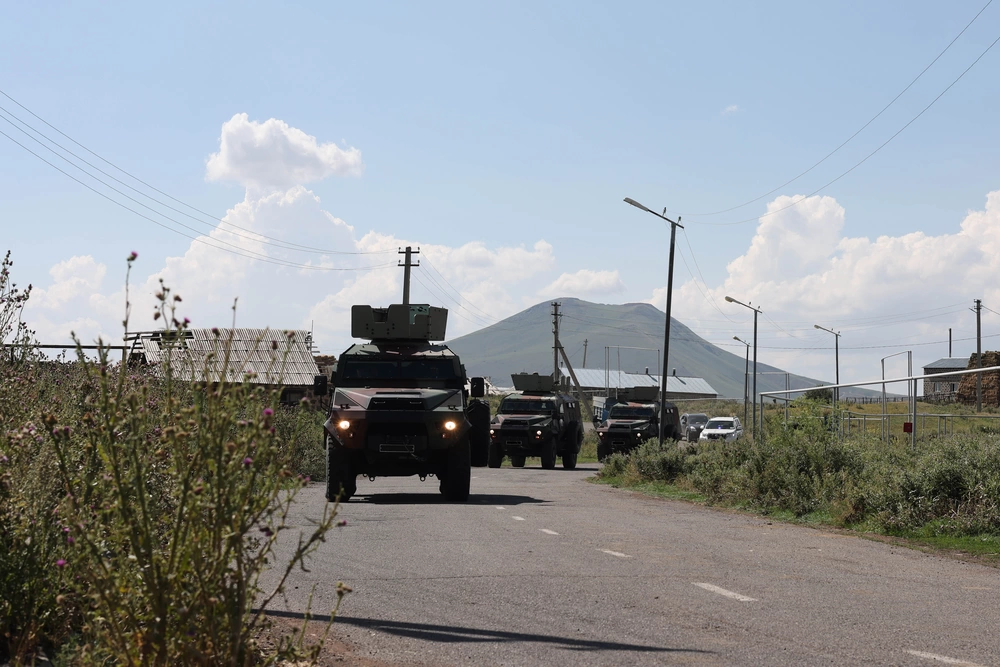The joint exercise Eagle Partner 24 saw U.S. and Armenian troops utilizing Bastion armored personnel carriers (APCs). The exercise, which commenced on July 15, 2024, and concludes on July 24, marks the second iteration of this partnership initiative, showcasing a notable expansion in both participation and scope compared to its predecessor in September 2023. Eagle Partner 24 focuses on improving interoperability between U.S. and Armenian forces during peacekeeping and stability operations. Participants include servicemembers from the peacekeeping brigade of the Armed Forces of the Republic of Armenia, the U.S. Army Europe and Africa, and the Kansas National Guard. The exercise emphasizes stabilization tasks amid conflicting parties, aiming to enhance the readiness of the Armenian unit for international peacekeeping missions. The drill also facilitates the exchange of best practices in control and tactical communication, crucial for units preparing for future operations.
Central to the exercise is the use of the Bastion APC, a versatile 4×4 armored vehicle produced by French company ACMAT, a subsidiary of ARQUUS, formerly known as Renault Trucks Defense. The Bastion APC is designed with blast protection technology, providing a reliable and safe platform for troops in hostile environments. In 2023, Armenia has reportedly taken delivery of the first batch of Bastion armored vehicles from the French defense company Arquus, formerly known as Renault Trucks Defense. It is worth noting that the Bastion armored vehicles received by Armenia are the same vehicles that Arquus pledged to deliver to Ukraine in 2022 from its stock of 24 units with 26 in production. The acquisition of the Bastion armored vehicles is seen as a significant step in bolstering Armenia’s defense capabilities amid regional security concerns. It is particularly valued for its off-road mobility and multi-role capacity, making it an ideal choice for operations requiring agility and durability.

The Bastion APC can carry ten soldiers in an internal volume of 8.5m³, including the driver and commander at the front and eight soldiers at the rear. The infantrymen enter and leave the BASTION APC via a double door without a central pillar in the rear of the hull, which opens outwards. Three bullet-proof windows are mounted to each side of the crew compartment, each with firing ports mounted in the lower part. The high hardness armored steel hull provides all-around protection against infantry rifles and machine guns (ballistic protection Level 1 to Level 3, NATO STANAG 4569) and artillery shell splinters. The vehicle provides protection against anti-personnel and anti-tank mines and side explosives. The Bastion uses V-hull technology, the purpose of this design is to increase vehicle and crew survivability by deflecting an upward-directed blast from a landmine or Improvised Explosive Device away from the vehicle, while also presenting a sloped armor face.
The Bastion APC, first unveiled in 2010 at the Eurosatory defense exhibition in France, has since become a key asset in the arsenals of many African nations, offered in various configurations. Built on the robust VLRA 2 TDN-TDE 4×4 tactical vehicle chassis, the Bastion APC combines high mobility with significant protective capabilities, making it suitable for a wide range of missions including reconnaissance, forward command and control, patrol, and peacekeeping operations. Additionally, ARQUUS has expanded the Bastion line with variants such as the Patsas and Fortress, catering to different operational needs. The company’s partnership with AM General also enables the production of the Bastion APC in the United States, supporting the U.S. Foreign Military Sales channel and broadening its reach to global markets. In 2018, Arquus, owner of ACMAT, signed a contract with AM General to propose the Bastion as an armored ambulance for the U.S. Army. As of 2021, AM General is making the Bastion.
















